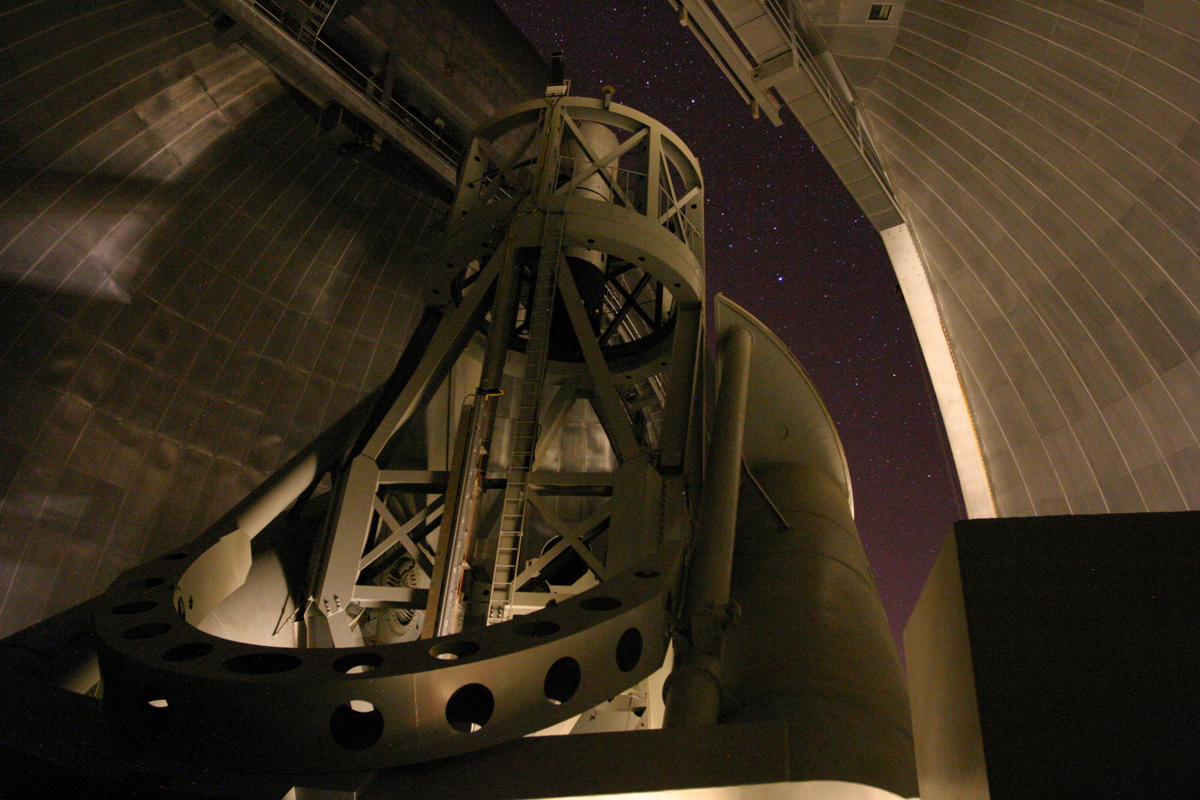The Hale Telescope is owned and operated by Caltech. Once upon a time 100% of the observing time belonged to Caltech. More recently Caltech has entered into partnerships with other institutions to divide up the observing time. Caltech now splits its observing time on the 200-inch telescope with astronomers from the Jet Propulsion Laboratory, Cornell University, American Museum of Natural History and Oxford University.

The astronomers come to Palomar but they do not look through the telescope at all. Instead complex instruments measure and record the visible or near-infrared light. The astronomers save the data and take it back to their home institutions to analyze. Eventually they publish their results for other astronomers to review and argue about.
A couple of weeks ago the Hale Telescope’s observing schedule for February – July, 2009 was published. Here’s a list that I put together of the kinds of things that our astronomers will be observing in the next six months.
In our solar system: Near-Earth asteroids, objects in the Kuiper Belt, comets, Centaurs
Other solar systems: Exoplanets (several search programs and studies of known exoplanets)
Stars and Almost Stars: brown dwarfs (including L dwarfs and Y dwarfs), M dwarf stars, binary stars, Wolf-Rayet stars, open star clusters, globular star clusters
Stellar birth, death and the some of what gets left behind: Circumstellar disks, star formation, giant molecular clouds, Pre-Planetary Nebulae, cataclysmic variable stars, X-ray binaries, hypervelocity stars, transients, Type Ia supernovae, supernova remnants, neutron stars, ultraluminous supernovae, gamma-ray bursts, possible sources of gravitational waves.
Galaxies and beyond: galaxy formation, galaxy evolution, dwarf galaxies, Luminous Infrared Galaxies, galaxies with active galactic nuclei, Seyfert Galaxies, high-redshift dust obscured galaxies, radio jets, quasars, the intergalactic medium, the re-ionization era, gravitational lensing, dark matter.
It is possible that I may have missed a thing or two, but as you can see we are studying objects in our own back yard (near-Earth asteroids) to the farthest reaches of the observable universe (quasars, the re-ionization era) and a lot of stuff in between.
The astronomers making these observations are coming to Palomar to use the Hale Telescope and its instrumentation, but they will also be using a wide range of other instrumentation and other telescopes including data from the Palomar Transient Factory, W.M. Keck Observatory, the ultraviolet Galaxy Evolution Explorer (Galex), the infrared Spitzer Space Telescope, Hubble Space Telescope, Chandra X-ray Observatory, Westerbork Synthesis Radio Telescope, Two Micron All-Sky Survey (2MASS), Owens Valley Radio Observatory, Catalina Sky Survey, Fermi Gamma-ray Telescope, and others.
We have one new instrument coming to the Hale this semester. In May, we will be commissioning the Cosmic Web Imager. You'll be hearing more about CWI later in the year.



No comments:
Post a Comment